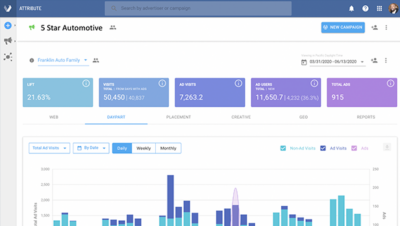In the last blog, we dove into the top trends impacting TV and how advertisers can adapt and achieve greater success with their marketing efforts. In this article, we’ll cover TV ad effectiveness, specifically how broadcasters can prove value to metric-hungry advertisers.
We will look at the following topics:
- Why is it important to measure the effectiveness of a TV ad?
- How is the effectiveness of TV ads typically measured?
- What can TV stations do to prove their effectiveness?
Why is it important to measure the effectiveness of a TV ad?
TV advertisers need metrics of success in order to justify the sometimes-high price tag of TV advertisements. In recent years, a pullback in channels that lacked clear metrics occurred because of tightening budgets driven by economic uncertainty. TV advertising suffered from this reallocation of budget towards data-rich digital channels.
Without these metrics, advertisers have no way to justify TV advertising costs. And when an ad is run, it has historically been difficult to determine the efficacy of the campaign.
The top questions advertisers want answered include:
- Did we reach the right people?
- Are we generating results?
- Are these results justifying spend?
To measure the effectiveness of a TV ad, it really boils down to two key aspects—awareness and consideration.
How effective are TV ads? And how are they typically measured?
Awareness generated by TV advertising traditionally has been measured by data that identified how many people tuned into a particular show or event. This metric gave advertisers an idea of the potential reach of their message. But in the modern age of instant metrics provided by digital advertising, potential reach isn’t granular enough for many advertisers.
Consumer consideration of an advertiser’s brand has typically been measured with Google Analytics. But the challenge here is correlating the time the ad ran with the data from searches and website visits. As a result, TV broadcasters have that uphill battle to fight to prove to their advertisers that their money was well spent.
However, this challenge has recently become much easier to solve, thanks to the emergence of AI-powered attribution solutions.
What can stations do to prove TV ad ROI?
Traditional methods of measuring the effectiveness of TV ads are not insightful enough to maintain advertiser staying power. Advertisers are now accustomed to seeing the more granular metrics provided by digital channels. They need proof-of-performance data to not only validate spend but also optimize and improve their marketing messaging or targeting.
The top things TV advertisers need to see include:
- Did our ad engage with the target audience in a meaningful, measurable way?
- Which ads performed best at which times?
- Are we maximizing spend?
- Are there opportunities to double down or pivot?
Broadcast-to-web attribution, which correlates TV ads with an uplift in web traffic, answers these questions with the metrics to back them up.
Minimizing television advertising costs with modern attribution
Working with broadcasters large and small, companies such as Veritone help TV stations not only retain their clients but also win back lost business while acquiring new accounts. A broadcast attribution solution such as Veritone Attribute accomplishes this by connecting an advertiser’s Google Analytics with a broadcaster’s content management system.
Using Veritone Attribute’s intuitive dashboard, broadcasters can build reports to help show advertisers how well ads performed. With these metrics, they can build strong relationships with their advertisers and consult them on how they can achieve better results with their TV ad campaigns—generating more revenue for broadcasters and more effective campaigns for brands at the same time.

In the next part of this series, we’ll dive deeper into how a broadcast attribution solution enables near real-time broadcast-to-web advertising metrics. In addition, we’ll highlight real-world examples of stations that have grown their business by taking advantage of a broadcast attribution solution.
To learn more about Veritone Attribute, contact a team member today.





